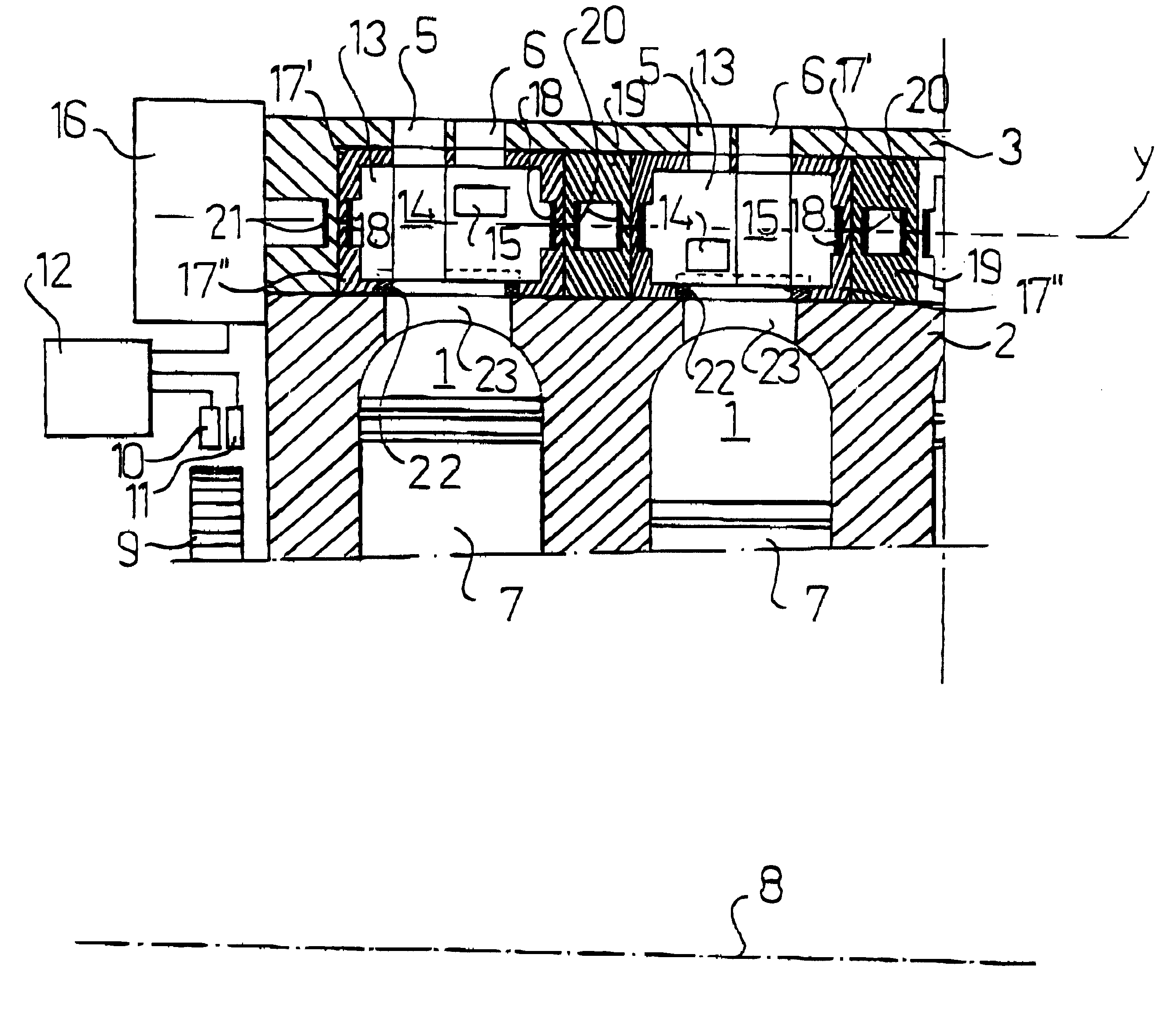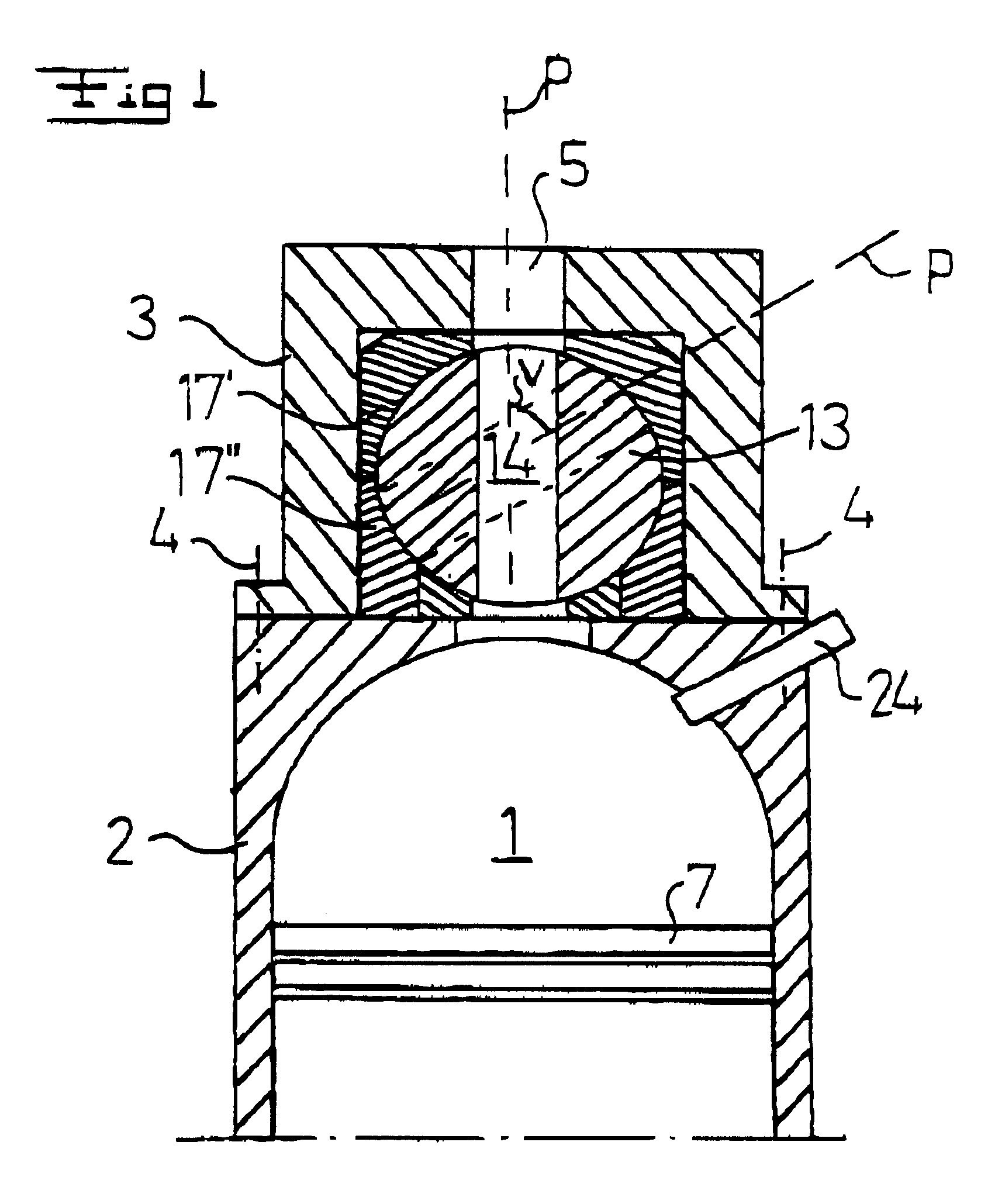Valve device for an internal combustion engine
a valve device and internal combustion engine technology, which is applied in the direction of non-mechanical valves, machines/engines, oscillatory slide valves, etc., can solve the problems of affecting the suction procedure and the exhaust procedure, and affecting the operation of the valve device. , the possibility of varying the time appears to be limited, and the construction is fairly complicated. , the effect of a plurality of further components
- Summary
- Abstract
- Description
- Claims
- Application Information
AI Technical Summary
Benefits of technology
Problems solved by technology
Method used
Image
Examples
third embodiment
FIG. 4 discloses schematically the invention having a separate rotatable valve body 13' for the inlet channel 5 and a separate rotatable valve body 13" for the outlet channel 6. The rotatable valve bodies 13', 13" are provided in such a way that their axes of rotation, y' and y", respectively, are parallel to each other. In the embodiment disclosed in FIG. 4, the two rotatable valve bodies 13', 13" have a common rotary motor 16, which rotates the valve bodies 13',13" via a power transmission member 29 having an inlet shaft and an outlet shaft which do not coincide.
fourth embodiment
FIG. 5 discloses schematically a fourth embodiment, which merely differs from the embodiment of FIG. 4 in that the rotatable valve bodies 13' and 13" have been provided with a respective separate rotary motor 16', 16". It is thereby possible to control the rotating valve bodies 13 ' for the inlet channels 5 of the engine independently of the rotating valve bodies 13" for the outlet channels 6 the engine. Consequently, it is possible to phase displace the opening and / or closing points of time for the inlet channel 5 and the outlet channel 6 in relation to each other dependent on different engine parameters or states, for instance the number of revolutions or the load of the engine.
fifth embodiment
FIG. 6 discloses the invention. In this embodiment, the valve body 13 is rotatably journalled in a circular cylindrical recess in a cylinder head including two parts 3' and 3", which are connected to each other along a dividing plane extending through a middle plane of the cylindrical recess. According to this embodiment, the valve body 13 includes merely one passage 30, which forms an inlet channel by the position disclosed in continuous lines, i.e. the passage 30 is in line with the inlet channel 5. In the position disclosed by dotted lines, the passage 30 forms an outlet passage together with the outlet channel 6. Preferably, the passage 30, seen in a cross-section through the passage, has a rectangular shape in order to achieve a cross-sectional area as large as possible. According to this embodiment, the valve body 13 will further form the upper limiting wall of the combustion chamber 1. Sealing members 31 may be provided in the lower part 3' of the cylinder head.
As appears fro...
PUM
 Login to View More
Login to View More Abstract
Description
Claims
Application Information
 Login to View More
Login to View More - R&D
- Intellectual Property
- Life Sciences
- Materials
- Tech Scout
- Unparalleled Data Quality
- Higher Quality Content
- 60% Fewer Hallucinations
Browse by: Latest US Patents, China's latest patents, Technical Efficacy Thesaurus, Application Domain, Technology Topic, Popular Technical Reports.
© 2025 PatSnap. All rights reserved.Legal|Privacy policy|Modern Slavery Act Transparency Statement|Sitemap|About US| Contact US: help@patsnap.com



